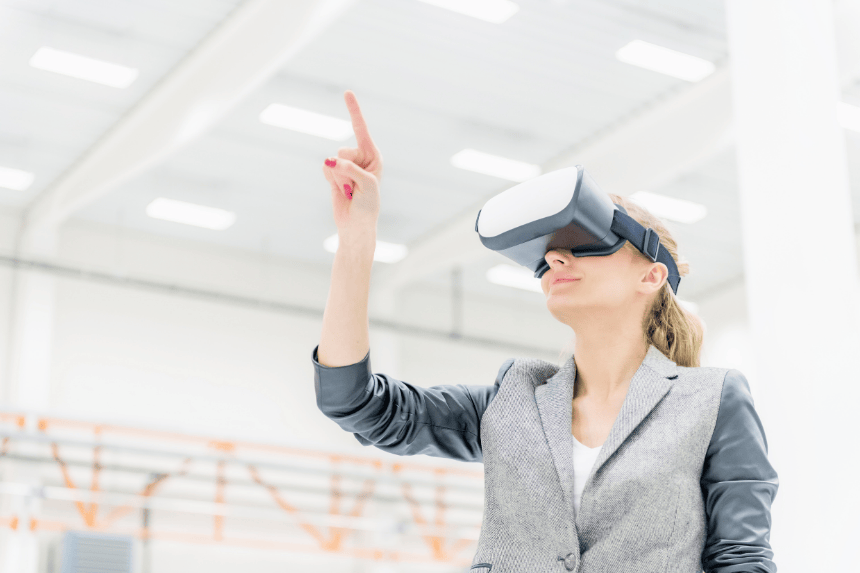
Experiential learning bridges the gap between theory and practice, empowering employees to cultivate practical skills for today’s workplace complexities. This article shares strategies to integrate experiential learning in corporate training.
Understanding Experiential Learning
Experiential Learning, as the name suggests, is a method of learning that is centered around engaging learners in hands-on experiences with the intention of providing them with effective learning sessions. One of the center pieces for the successful implementation of experiential learning strategies is the understanding of how experiential learning occurs.
Its roots lie in the 70:20:10 rule, developed in the 1980s by researchers at the Center for Creative Leadership. This rule holds that a learner absorbs (learns) 70% of their knowledge from on-the-job experiences – that’s what experiential learning in the workplace is all about! Of the remaining 30%, a full 20% learning happens as a result of interactions with third parties, while only 10% is attributable to formal learning.
In today’s hybrid work environment, experiential learning is a crucial tool for skill development and behavioral change, aligning with modern L&D trends such as Learning in the Flow of Work (LIFOW). By integrating immersive technologies, organizations can enhance engagement and seamlessly integrate learning into the work environment.
What Are the Benefits of Experiential Learning?
-
Enhanced levels of engagement and motivation:
Experiential learning, which is in line with the trend of optimizing digital learning, makes use of immersive experiences like gamified scenarios and virtual reality simulations. These dynamic learning environments captivate learners, fostering heightened engagement and enthusiasm for the material.
-
Effective problem-solving skills and improved levels of skill application:
In keeping with the focus on skills-based organizations, experiential learning offers practical experiences that push learners to find solutions to real-world issues. Through active participation in real-world projects and simulations, learners improve their problem-solving skills and acquire invaluable experience in applying knowledge in a variety of settings.
-
Strengthens teamwork and collaboration skills:
Experiential learning fosters collaboration and teamwork. Learners increase team dynamics inside organizations by developing effective communication skills and learning how to collaborate with others via interactive activities and team-based challenges.
-
Helps adapt to changing workplace requirements:
Experiential learning, echoing learning in the flow of work, equips learners for the dynamic nature of the modern workplace. By immersing learners in realistic simulations and offering customized learning journeys, experiential learning equips them with the skills and knowledge required to thrive in a changing professional environment .
-
Enhances ability to align concepts and their relevant practices:
Experiential learning bridges the gap between theory and practice. Through the application of theoretical concepts in real-world contexts, experiential learning guarantees alignment with business requirements and fosters the development of practical skills in learners.
-
Provides a fun and immersive learning environment:
Experiential training utilizes immersive technologies and gamification to create engaging learning experiences, reflecting the trend of optimizing digital learning. By incorporating gamified elements and interactivity, experiential learning grabs learners’ attention and improves retention of information.
-
Highly effective in combatting the forgetting curve:
Experiential learning promotes deeper learning and long-term retention of information, addressing the trend of workforce enablement and global transformation. When learners are actively involved in the learning process through hands-on activities and realistic simulations, recall rates are higher in experiential learning than in passive training approaches.
How Does Experiential Learning Lead to Behavioral Change?
Today’s hybrid form of working has pushed experiential learning in the workplace to the forefront by facilitating changes in workplace behavior. When it comes to helping employees overcome obstacles and think creatively while working under limitations, experiential learning techniques are essential for creating long-lasting behavioral changes. This aligns with the essence of adapting to changes in the flow of work, where immersive encounters in real and virtual worlds support the development of skills and the adaptation of behavior through experiential learning.
The fundamental tenet of experiential learning is experimenting, which is increasingly important in light of the rise of artificial intelligence and automation in the workplace. By leveraging AI-driven personalized learning, employees safely explore and adopt new behaviors, which lays the groundwork for durable habits and abilities.
Additionally, reflection acts as a catalyst, echoing the principles of emotional intelligence in essential learning. Employees discover opportunities for improvement through coaching and mindfulness exercises, which helps to reinforce the adoption of new behaviors. This holistic strategy ensures that behavioral change is deeply ingrained rather than surface-level, empowering individuals to thrive in the ever-evolving work environment.
What Strategies Can You Adopt to Integrate Experiential Learning in Workplace Training?
Here is a list of our 8 effective learning strategies to help L&D teams integrate experiential learning into their corporate training programs:
-
Enhancing Virtual Instructor-Led Training (VILT) with experiential elements:
With so many hybrid employees already embracing VILT, this might be a great time to integrate aspects of experiential training into the standard VILT curriculum.
-
Implementing game-based learning to simulate workplace scenarios:
Creating games based on actual workplace environments help virtual employees practice, learn, and fail in a safe environment, while also honing their skills and enhancing performance in key workplace skills.
-
Utilizing immersive technologies like AR, VR, and 360 Video:
Use technologies to recreate real-world workplace environments, such as Augmented Reality (AR), Virtual Reality (VR), and 360 Video to connect with learners to deliver real-world experiences that most ILT/VILT approaches can’t provide.
-
Creating branching simulations for active decision-making experiences:
Active decision-making is another pillar through which successful workplace experiential learning strategies are built. Branching simulations give learners real-life exposure to making difficult choices in true-to-life workplace situations.
-
Employing scenario-based learning for case studies and role-play:
Like simulations, these learning tools encourage learners to make decisions, take risks, fail, and learn from their failures.
-
Providing on-the-job training with just-in-time resources:
Offer hybrid employees access to just-in-time learning resources and learning in the workflow tools as part of the experiential learning experience.
-
Leveraging blended learning through coaching and mentoring:
Further your experiential learning strategy by coaching and mentoring hybrid employees, using virtual internship and apprenticeship interactions.
-
Utilizing social learning platforms for observation and interaction:
A central plank of experiential learning is observing others and learning from those observations. Social learning, through messaging, chats, video sharing, and moderated learning networks, offers a great opportunity to leverage experiential learning in the workplace.
Parting Thoughts
Experiential learning serves as a great approach to help hybrid workforces learn the skills they need for the job and improve workplace performance. By integrating immersive technologies and providing hands-on experiences, organizations can cultivate engagement, adaptability, and collaboration among their workforce.
The transformational power of experiential learning is emphasized by the concepts of reflection and experimentation, which promote long-lasting behavioral change that is necessary for success in the fast-paced workplace of today. The implementation of the strategies outlined in this article not only enhances employee learning but also contributes to a more agile and resilient organizational culture.



